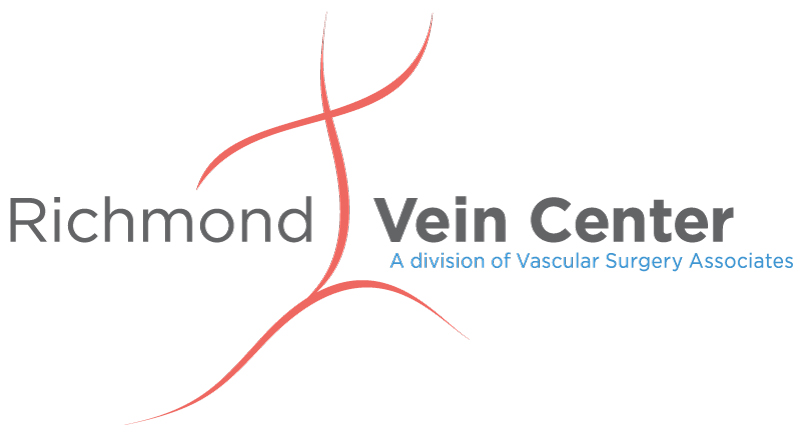>> ClariVein®
>> Microphlebectomy
>> Sclerotherapy
>> Veinwave™ (New!)
>> Insurance Information
>> Before and After Gallery
>> Testimonials
Experience the VNUS® Closure® Procedure.
At The Richmond Vein Center, the VNUS® Closure® procedure is performed in the office using local anesthesia. The patient experiences little to no pain. The procedure consists of FOUR principal steps:
 1. Map the Saphenous Vein. A typical procedure begins with noninvasive ultrasound imaging of the diseased vein to trace its location. This allows the physician to determine the site where the Closure catheter will be inserted and to mark the desired position of the catheter tip to begin treatment.
1. Map the Saphenous Vein. A typical procedure begins with noninvasive ultrasound imaging of the diseased vein to trace its location. This allows the physician to determine the site where the Closure catheter will be inserted and to mark the desired position of the catheter tip to begin treatment.
 2. Insert the ClosureFast™ Catheter. After the physician assesses the saphenous vein, the ClosureFast™ catheter is inserted into the vein and advanced to the uppermost segment of the vein. The physician then typically injects a volume of dilute anesthetic fluid into the area surrounding the vein. This numbs the leg, helps squeeze blood out of the vein and provides a fluid layer outside the vein to protect surrounding tissue from heat once the catheter starts delivering RF energy.
2. Insert the ClosureFast™ Catheter. After the physician assesses the saphenous vein, the ClosureFast™ catheter is inserted into the vein and advanced to the uppermost segment of the vein. The physician then typically injects a volume of dilute anesthetic fluid into the area surrounding the vein. This numbs the leg, helps squeeze blood out of the vein and provides a fluid layer outside the vein to protect surrounding tissue from heat once the catheter starts delivering RF energy.
 3. Deliver RF Energy and Withdraw the ClosureFast™ Catheter. Noninvasive ultrasound is used to confirm the catheter tip position and the physician then activates the RF generator, causing the electrodes at the tip of the catheter to heat the vein wall to a target temperature of typically 120 degrees Centigrade or 248 degrees Fahrenheit. As the vein wall is heated, the vein shrinks and the catheter is gradually withdrawn. During catheter pullback, which typically occurs over 2 to 3 minutes, the RF generator regularly adjusts the power level to maintain target temperature to effectively shrink collagen in the vein wall and close the vein over an extended length.
3. Deliver RF Energy and Withdraw the ClosureFast™ Catheter. Noninvasive ultrasound is used to confirm the catheter tip position and the physician then activates the RF generator, causing the electrodes at the tip of the catheter to heat the vein wall to a target temperature of typically 120 degrees Centigrade or 248 degrees Fahrenheit. As the vein wall is heated, the vein shrinks and the catheter is gradually withdrawn. During catheter pullback, which typically occurs over 2 to 3 minutes, the RF generator regularly adjusts the power level to maintain target temperature to effectively shrink collagen in the vein wall and close the vein over an extended length.
 4. Confirm Closing of Vein. After treatment, ultrasound imaging is used to confirm closing of the vein. If aportion of the vein is not closed, the catheter can be reinserted and energy reapplied. After the procedure, the narrowed vein gradually becomes fibrous, sealing the interior of the vein walls and naturally redirecting blood flow to healthy veins. The procedure is often completed in 45 minutes.
4. Confirm Closing of Vein. After treatment, ultrasound imaging is used to confirm closing of the vein. If aportion of the vein is not closed, the catheter can be reinserted and energy reapplied. After the procedure, the narrowed vein gradually becomes fibrous, sealing the interior of the vein walls and naturally redirecting blood flow to healthy veins. The procedure is often completed in 45 minutes.

View the VNUS ClosureFAST™
Demonstration
POST TREATMENT REGIMEN
- Wear compression stocking for first 48 hours (sleep in them). For the next 5 Days, wear only during daily activity.
- Return to normal activity immediately.
- No strenuous activities for 3 days (ex. heavy lifting).
- Ambulation instructions: 30 minutes daily for 7 days.
- Follow up venous ultrasound and appointment with Dr. Gould 2 Days after appointment.
- It is normal to experience some tenderness, possible bruising and “leak” watery fluid from the leg where local anesthesia was administered.
Clinical studies show that the VNUS® Closure® Procedure significantly improves patient’s symptoms of leg discomfort, swelling and pain in just 1-2 weeks after the procedure, with 90% of patients reporting durable relief from these symptoms. In fact, 98% of patients who have undergone the VNUS® Closure® Procedure are willing to recommend it to a friend or family member.
We instruct our patients to walk regularly for several days after the Closure procedure and return within 72 hours for an ultrasound examination. We prescribe compression stockings to be worn for several days or weeks after the procedure. Compression stockings are prescribed as a routine item for vein procedures with the goal of enhancing patient comfort in the initial days after treatment.

